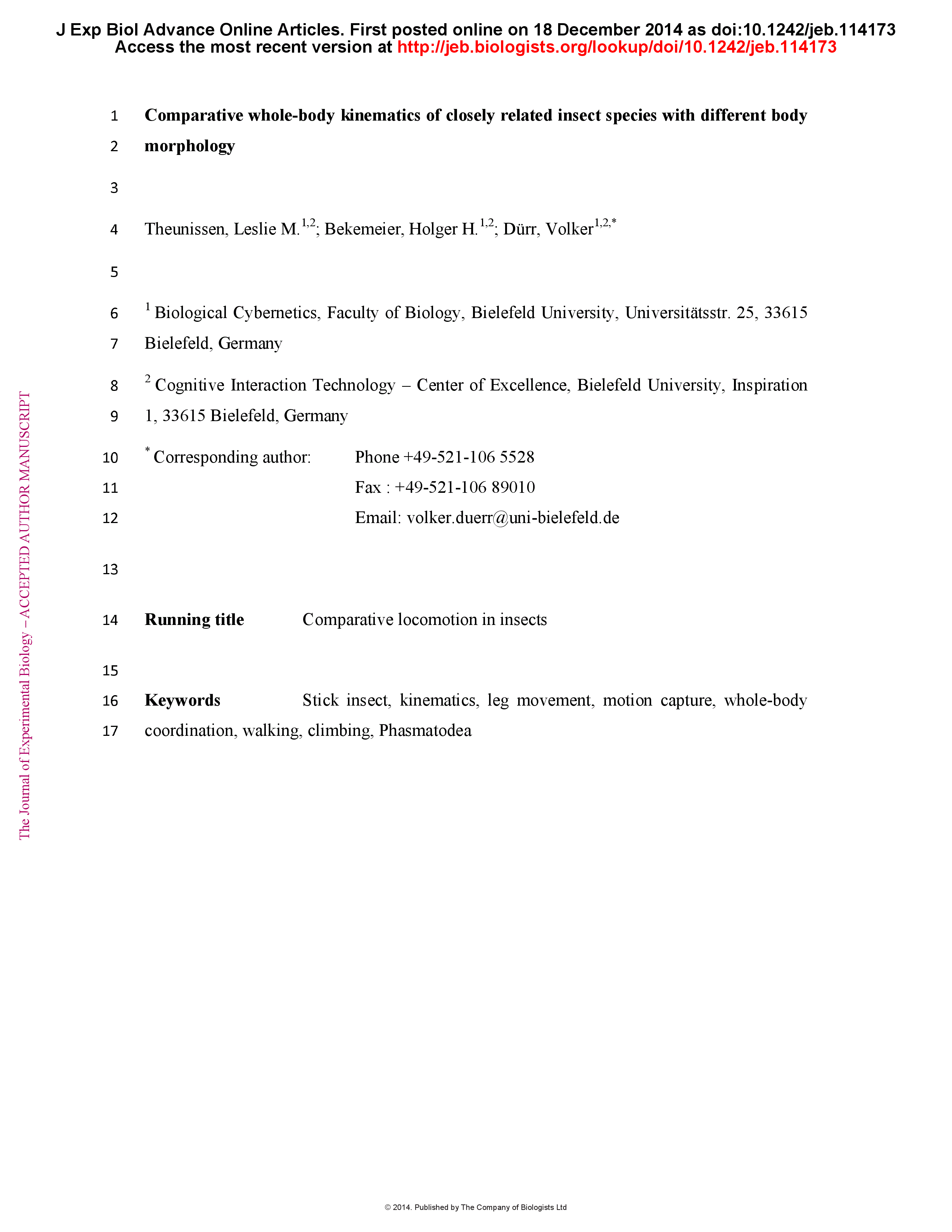Abstract
Legged locomotion through natural environments is very complex and variable. For example, leg kinematics may differ strongly among species, but even within the same species it is adaptive and context-dependent. Inter-species differences in locomotion are often difficult to interpret, because both morphological and ecological differences among species may be strong and, as a consequence, confound each other's effects. In order to understand better how body morphology affects legged locomotion, we compare unrestrained whole-body kinematics of three stick insect species with different body proportions, but similar feeding ecology: Carausius morosus, Aretaon asperrimus and Medauroidea extradentata (= Cuniculina impigra). In order to co-vary locomotory context, we introduced a gradually increasing demand for climbing by varying the height of stairs on the set-up. The species were similar in many aspects, for example in using distinct classes of steps, with minor differences concerning the spread of corrective short steps. Major differences were related to (1) antenna length, (2) segment lengths of thorax and head, and (3) the ratio of leg length over body length: (1) Whereas all species continuously moved their antennae, only Medauroidea executed high swing movements with its front legs to search for obstacles in the near-range environment. (2) Whereas all species adjusted their body inclination, the range in which body segments moved differed considerably, with longer thorax segments tending to be moved more. (3) Finally, leg posture, time courses of leg joint angles and intra-leg coordination differed most strongly in long-legged Medauroidea.








